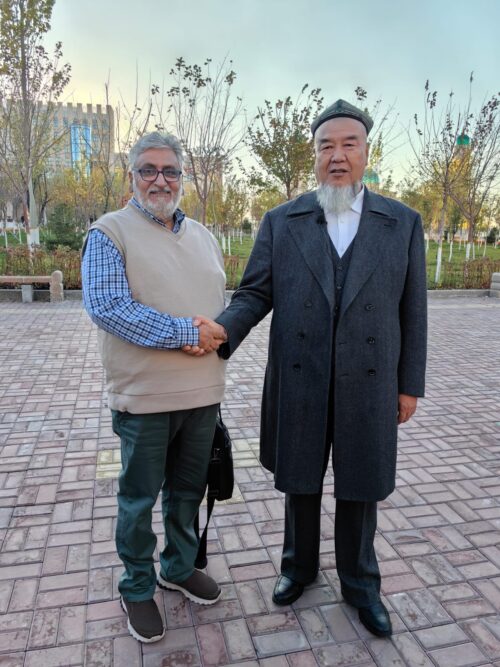By Haroon Qureshi
XINJIANG: On the special invitation of the Chinese Ministry of Foreign Affairs, 20 delegates from 14 Arab countries came to China, headed by Dr. Wasim Maulana, Deputy Minister of Religious Affairs of the Republic of Syria and journalists. Wherever the delegates went during the visit, the Chinese language was translated into English and Arabic simultaneously.
Here Xinjiang Muslims are taught religious education, culture, Islamic history, jurisprudence and interpretation of the Holy Quran and Arabic language. For which China’s central government provides most of its revenue. The city of Urumqi is located in the heart of the Uighur region in Xinjiang, northwestern China.
The city’s name means “good pasture”. It is located in a fertile oasis along the northern slopes of the eastern Tien Shan mountain range. As per the scheduled program, when the team arrived at the Xinjiang Islamic Institute, the president of the institute and the vice president of the Islamic Union of Xinjiang Region, Abdul Raqib Tamerniaz, warmly welcomed the delegates. And detailed about the Xinjiang Islamic Institute. Abdul Raqib Taymarniaz himself is a graduate of Al-Azhar University. Tamerniaz told about the history of the institute that the old institute was established in Urumqi city as it was opened in 1987 and due to the increase of students who wanted to study Islamic religion we opened the new institute in the year 2017.
Elaborating further, he said that it cost about 20 million yuan to develop, all of which was paid for by the central government of China. The new institute has an area of about 150,000 square meters and includes 270 rooms for students including their residences. The institute has all the modern facilities in a restaurant and sports ground. A newly designed beautiful mosque has been constructed which has capacity for 1000 worshipers to sit and pray at a time. Where all religious issues are resolved according to Islamic principles except for Eid al-Fitr and Eid al-Adha prayers with five daily prayers.
A new thing has been seen here, special machines have been placed to enter the mosque, which is plastic coated on the shoes of the pilgrims entering. You can enter the mosque without taking off your shoes. Just like what hospital staff wear in intensive care wards in hospitals. In 2017, 8 new branches of our institution were established in North and South Xinjiang, and the total number of our students is about 3,000, said Taimurniaz. There is also an Islamic school in Xinjiang, and we have 10 schools in total. Secular education is also given here along with teaching of Quran and Sunnah. The library here has an area of 1400 square meters, and is spread over 3 floors. There are 40,000 Islamic books and 30,000 e-books available in addition to Bukhari Sharif volumes. Specially, translations of the Holy Quran are being done here in many other languages including Chinese and Uyghur.
A look at this library suggests that reading books is still in progress in China. The delegates visited two or three congregations where the students were engaged in religious studies with great discipline and all the teachers and students wore the same square caps. In a group, the teacher was making the children recite Surat Rahman. A child recited Surah Rahman with recitation.
From here the children are engaged in livelihood after graduation and the students who want to get further Islamic education are sent to different universities. Tamerniaz added that the Chinese constitution mandates respect for all religions, and there is no restriction on any Chinese citizen. All are equal in civil rights, and the government respects the freedom of all religions and beliefs.




